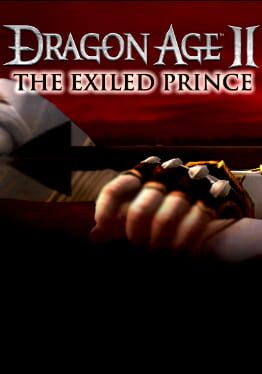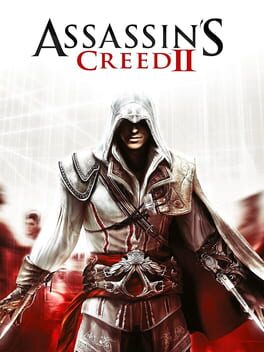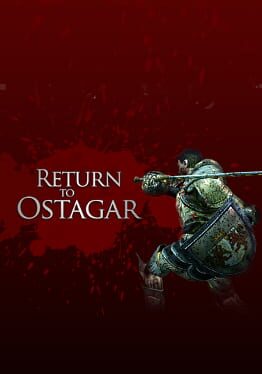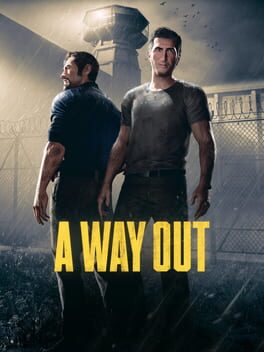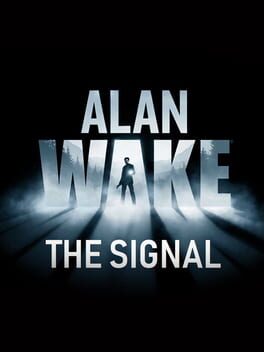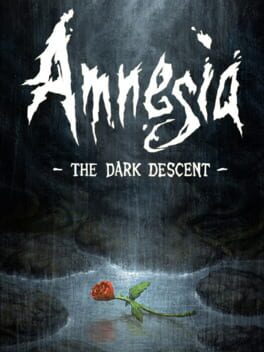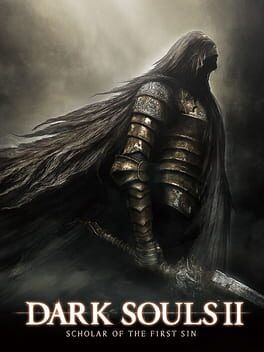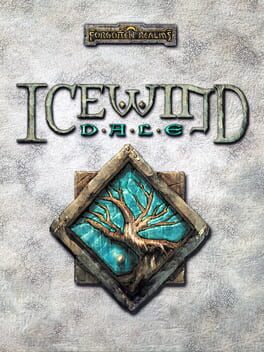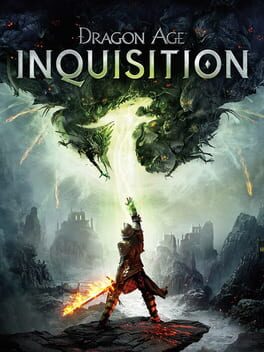squid0812
BACKER
This review contains spoilers
Adding Sebastian to the game was really a narrative necessity, given that the base game was noticeably lacking a character to lend some stakes to the whole subplot in which the Divine tries forge a middle ground between the Templars and mages. But the character himself is such a bore that the narrative dividends never really materialize (this point is perfectly crystallized in the goofy scream Sebastian gives after the Chantry blows up - it's a genuinely funny moment of unintentional hilarity, when they were clearly going for pathos).
But genuinely, there's really nothing to recommend about interacting with this added character. His main concept is that he's pious, which in this game means he mopes a lot and petulantly complains about the Maker's failure to strike down his enemies. Then, when you finally do that for him, he starts thanking the Maker. What an asshole. There's also a chaste romance that female Hawke can pursue with him, which might have been interesting in a game with better writing than Dragon Age II. Add in the fact that the quests added here are basic dungeon crawls with no significant gameplay innovation to make them stand out, and the idea that they charged money for this becomes more than a little vexing.
But genuinely, there's really nothing to recommend about interacting with this added character. His main concept is that he's pious, which in this game means he mopes a lot and petulantly complains about the Maker's failure to strike down his enemies. Then, when you finally do that for him, he starts thanking the Maker. What an asshole. There's also a chaste romance that female Hawke can pursue with him, which might have been interesting in a game with better writing than Dragon Age II. Add in the fact that the quests added here are basic dungeon crawls with no significant gameplay innovation to make them stand out, and the idea that they charged money for this becomes more than a little vexing.
2009
A game that doesn't fix the problems of its predecessor so much as it polishes them to a fine sheen. If the first Assassin's Creed was effectively an unfinished tech demo, then this is the game that the developers at Ubisoft must have truly wanted to make all along. There's just one problem - no matter how much polish you apply to a bad idea, it remains, as ever, a bad idea.
To start with a few minor positives: this game looks excellent, and the different cities that Ezio explores actually stand out as unique and different in a way that never lands in the original game. The gameplay also controls significantly more smoothly in nearly every facet, from the parkour (still mildly enjoyable) to the combat (still unconscionably repetitive). Most importantly, the narrative is a drastic improvement. Granted, it's not anything outstanding - characters having two dimensions rather than one is nothing to be proud of - but this is the Assassin's Creed game that first introduced some of the insane goofiness that Ubisoft would double down on in later games. This is a game in which your character's passage through the birth canal is a playable event, a game that ends with a one-on-one brawl against the Pope in the Vatican basement. It would be wrong to call this stuff good, but it certainly makes for some hilarious, pulpy fun.
Alas, the majority of my time with ACII was not spent enjoying the bizarre campiness. Instead, the vast majority of this game's content consists of some really bland questing. As in the first game, the same basic structure is repeated throughout - complete a few short preparatory quests before attempting to take down an assassination target. Although the preparatory quests are significantly more varied than in the first game, they still tend to consist of banal check-listing (i.e. rescue three groups of allies, light five signal fires, etc.). The assassinations themselves are also more creative, which would have made a bigger difference had I been not just relying on the same unwieldy stealth concepts and ponderous combat from the original game.
Seriously, try to consider how cool some rough contemporaries like Hitman (the old ones) or Dishonored allow you to feel, and then compare it with underwhelming lack of payoff that comes after you are inevitably spotted and are forced to sprint past all of the enemies to clumsily tackle your target in this game. That's how the majority of the assassination missions in this game ended for me - a huge letdown. I've had my share of fun with this series, but these early entries are more than a little tough to come back to.
To start with a few minor positives: this game looks excellent, and the different cities that Ezio explores actually stand out as unique and different in a way that never lands in the original game. The gameplay also controls significantly more smoothly in nearly every facet, from the parkour (still mildly enjoyable) to the combat (still unconscionably repetitive). Most importantly, the narrative is a drastic improvement. Granted, it's not anything outstanding - characters having two dimensions rather than one is nothing to be proud of - but this is the Assassin's Creed game that first introduced some of the insane goofiness that Ubisoft would double down on in later games. This is a game in which your character's passage through the birth canal is a playable event, a game that ends with a one-on-one brawl against the Pope in the Vatican basement. It would be wrong to call this stuff good, but it certainly makes for some hilarious, pulpy fun.
Alas, the majority of my time with ACII was not spent enjoying the bizarre campiness. Instead, the vast majority of this game's content consists of some really bland questing. As in the first game, the same basic structure is repeated throughout - complete a few short preparatory quests before attempting to take down an assassination target. Although the preparatory quests are significantly more varied than in the first game, they still tend to consist of banal check-listing (i.e. rescue three groups of allies, light five signal fires, etc.). The assassinations themselves are also more creative, which would have made a bigger difference had I been not just relying on the same unwieldy stealth concepts and ponderous combat from the original game.
Seriously, try to consider how cool some rough contemporaries like Hitman (the old ones) or Dishonored allow you to feel, and then compare it with underwhelming lack of payoff that comes after you are inevitably spotted and are forced to sprint past all of the enemies to clumsily tackle your target in this game. That's how the majority of the assassination missions in this game ended for me - a huge letdown. I've had my share of fun with this series, but these early entries are more than a little tough to come back to.
A strange relic of the brief period when cheap DLC packs were parceled out in one to two hour chunks. Indeed, this inconsequential bit of fluff is emblematic of the issues that doomed that business model from the start: shoddily reused assets, a barebones storyline with little connection to the overarching plot, and a dearth of unique gameplay concepts. Eminently skippable, this will suffice if you are looking to engage in a bit more of the dungeon crawling from the base game. Expecting more than that is folly.
2018
A difficult game to critique, for two reasons. Firstly, so much of its appeal is due to its reliance on couch co-op (this is playable as online co-op but it seems to me like that would eliminate a lot of the fun). Secondly, I have no clue if the people who made this game were in on the joke - this is low-key one of the funniest games I’ve ever played, but the humor seems to be at least partly unintentional.
The story here is a pile of cliches derived from American crime movies of the past fifty years. Again, I’m not sure if the developers wanted us to take this plot seriously, but my wife and I were laughing constantly at how the game continuously churns out bad, weirdly off-kilter imitations of scenes that you’ve seen in a hundred different movies - and all with a straight face. A large part of the goofiness is derived from the voice acting, which ranges from eerily emotionless (Vincent) to sounding like an alien in disguise visiting Earth for the first time (Leo). So many of the line readings here sound strangely divorced from their context. In a way, it helps - every time we got bored with the story, one of the characters would say something ridiculous and get us laughing again. But, again, expecting much beyond a few so-bad-it’s-good chuckles from the story is a fool’s errand.
Gameplay-wise, the co-op elements are occasionally intriguing - there are a few sequences, like the jailbreak, that force the players to work together in an interesting way. As the game goes on, the gameplay gets a lot less engaging, though. There are a few sequences in which the players are let loose to explore individually - but this is not an really an exploration-based game, so I typically found myself bored stiff during these parts. There a few shooter sequences as well, and these also felt pretty perfunctory to me. It felt like they had a solid concept for some engaging gameplay, but they didn’t iterate enough on it to justify a 5-6 hour game.
With all that being said, I won’t deny that I had a good time with my wife while playing this - the game works as a vehicle for social interaction. But looking at it as a game rather than as a chance to goof around with family or friends leaves it wanting.
The story here is a pile of cliches derived from American crime movies of the past fifty years. Again, I’m not sure if the developers wanted us to take this plot seriously, but my wife and I were laughing constantly at how the game continuously churns out bad, weirdly off-kilter imitations of scenes that you’ve seen in a hundred different movies - and all with a straight face. A large part of the goofiness is derived from the voice acting, which ranges from eerily emotionless (Vincent) to sounding like an alien in disguise visiting Earth for the first time (Leo). So many of the line readings here sound strangely divorced from their context. In a way, it helps - every time we got bored with the story, one of the characters would say something ridiculous and get us laughing again. But, again, expecting much beyond a few so-bad-it’s-good chuckles from the story is a fool’s errand.
Gameplay-wise, the co-op elements are occasionally intriguing - there are a few sequences, like the jailbreak, that force the players to work together in an interesting way. As the game goes on, the gameplay gets a lot less engaging, though. There are a few sequences in which the players are let loose to explore individually - but this is not an really an exploration-based game, so I typically found myself bored stiff during these parts. There a few shooter sequences as well, and these also felt pretty perfunctory to me. It felt like they had a solid concept for some engaging gameplay, but they didn’t iterate enough on it to justify a 5-6 hour game.
With all that being said, I won’t deny that I had a good time with my wife while playing this - the game works as a vehicle for social interaction. But looking at it as a game rather than as a chance to goof around with family or friends leaves it wanting.
2014
An overstuffed, tonally disjointed attempt by Shinji Mikami to recreate the magic of early Resident Evil, with a dash of Silent Hill thrown in for good measure. I'm naturally inclined to enjoy this kind of survival horror, but this game left me cold, for a number of reasons.
My principal issue here is the storytelling, which has problems on a number of fronts. Most obviously, large parts of the beginning and middle of this game feel completely extraneous. Almost nothing happens that is of any consequence to the overarching plot in Chapters 2 through 8, so I felt adrift for most of that section of the game. This also happens to be the part of the game that feels most like it is half-heartedly checking off lists of well-worn survival horror cliches - mental hospitals, graveyards, sewers, catacombs (most of which feel like unused sets from a Saw movie). It's unfortunate, because once the plot starts to pick up around Chapter 9 (a miniaturized reconstruction of the Spencer Mansion from Resident Evil that contains some of the game's creepiest imagery), I became a lot more engaged. Overall, I think elements of this story are rather cool, but I have no idea why the game needed 15-20 hours to unfold its relatively straightforward plot.
The other thing that holds back the narrative is the abject lack of character development. The player character, Sebastian, is a complete blank slate who seems to be reacting to things that happened five chapters ago every time he speaks. There is a very underdeveloped attempt to give him some backstory through journal entries, but unfortunately these never really tie in to the main story. His partners aren't much better. We have Joseph, whose main characteristic appears to be that he values his glasses more than his partner's life. Then there's Kidman, whose actions are totally nonsensical unless you play the DLC. Our antagonist, Ruvik, ends up as the only character to get fully developed, and he's just a one-dimensional mustache-twirler who views everyone around him as fodder for twisted science experiments.
The game is also a mixed bag gameplay-wise. In what I can only assume was an attempt to re-create the sense of tension generated by the tank control, fixed camera angle style of the early Resident Evil games, the camera here is pushed way in over Sebastian's shoulder, and letterboxing is added to further limit the player's viewpoint. Conceptually, I appreciate the attempt to creatively utilize the game's visual style to build a sense of tension, but too often it leads to situations that feel cheap. There's never any effective way to tell if you've been spotted when you're sneaking, and there were a number of times when the first inkling I had that my character was in danger was a chainsaw or hammer killing him in one shot (instant death BS abounds throughout the game).
On the other end of the spectrum, I really enjoyed the resource management aspects of the game. The amount of ammo and other resources spread throughout the levels feels extremely well-balanced - I was always short enough for there to be tension, but I never completely ran out so that I couldn't progress. The shooting, particularly with the heavy weapons, feels appropriately satisfying.
The monsters are hit or miss for me (too many generic zombies and writhing masses that just read as blobs of goop from a distance), but a few of the goofier designs really work (see: the Safehead guys). It's unfortunate that the singular quality of some of the best monster encounters is diluted by repetition - the unnecessary repeat boss encounters contributed to my feeling that some of the early chapters should have been left on the cutting room floor.
I was ready to say I hated this a few chapters in, but the improvement in the second half of the game left me with some positive vibes. Still, there are too many failed experiments (ha) and misguided design choices for me to view this as much more than a mixed accomplishment.
My principal issue here is the storytelling, which has problems on a number of fronts. Most obviously, large parts of the beginning and middle of this game feel completely extraneous. Almost nothing happens that is of any consequence to the overarching plot in Chapters 2 through 8, so I felt adrift for most of that section of the game. This also happens to be the part of the game that feels most like it is half-heartedly checking off lists of well-worn survival horror cliches - mental hospitals, graveyards, sewers, catacombs (most of which feel like unused sets from a Saw movie). It's unfortunate, because once the plot starts to pick up around Chapter 9 (a miniaturized reconstruction of the Spencer Mansion from Resident Evil that contains some of the game's creepiest imagery), I became a lot more engaged. Overall, I think elements of this story are rather cool, but I have no idea why the game needed 15-20 hours to unfold its relatively straightforward plot.
The other thing that holds back the narrative is the abject lack of character development. The player character, Sebastian, is a complete blank slate who seems to be reacting to things that happened five chapters ago every time he speaks. There is a very underdeveloped attempt to give him some backstory through journal entries, but unfortunately these never really tie in to the main story. His partners aren't much better. We have Joseph, whose main characteristic appears to be that he values his glasses more than his partner's life. Then there's Kidman, whose actions are totally nonsensical unless you play the DLC. Our antagonist, Ruvik, ends up as the only character to get fully developed, and he's just a one-dimensional mustache-twirler who views everyone around him as fodder for twisted science experiments.
The game is also a mixed bag gameplay-wise. In what I can only assume was an attempt to re-create the sense of tension generated by the tank control, fixed camera angle style of the early Resident Evil games, the camera here is pushed way in over Sebastian's shoulder, and letterboxing is added to further limit the player's viewpoint. Conceptually, I appreciate the attempt to creatively utilize the game's visual style to build a sense of tension, but too often it leads to situations that feel cheap. There's never any effective way to tell if you've been spotted when you're sneaking, and there were a number of times when the first inkling I had that my character was in danger was a chainsaw or hammer killing him in one shot (instant death BS abounds throughout the game).
On the other end of the spectrum, I really enjoyed the resource management aspects of the game. The amount of ammo and other resources spread throughout the levels feels extremely well-balanced - I was always short enough for there to be tension, but I never completely ran out so that I couldn't progress. The shooting, particularly with the heavy weapons, feels appropriately satisfying.
The monsters are hit or miss for me (too many generic zombies and writhing masses that just read as blobs of goop from a distance), but a few of the goofier designs really work (see: the Safehead guys). It's unfortunate that the singular quality of some of the best monster encounters is diluted by repetition - the unnecessary repeat boss encounters contributed to my feeling that some of the early chapters should have been left on the cutting room floor.
I was ready to say I hated this a few chapters in, but the improvement in the second half of the game left me with some positive vibes. Still, there are too many failed experiments (ha) and misguided design choices for me to view this as much more than a mixed accomplishment.
Of the three DLCs for Dark Souls II, this is probably the worst in terms of level and encounter design. That being said, the level design is still miles ahead of the base game, and despite their obnoxious configurations, most of the new enemies are fun to fight one-on-one (I especially enjoyed the giant guys who have lava pouring out of their shoulders to punish circle strafing). Most significantly, two of three new bosses here are among the the best in the series. Sir Alonne is a tense and challenging honor duel who somehow makes his deplorable boss run completely worth it. And the Fume Knight is another superb one-on-one fight with a clever mechanic tied into level exploration. These two bosses alone make the expansion worth your time (the third boss is a lazy reskin of the Smelter Demon tucked away at the end of one of the ridiculously hostile challenge areas that were apparently obligatory in all of the DSII DLCS). Add on some level exploration that is very good (even if it’s not quite as strong as Shulva or Frozen Eleum Loyce) and you have a quality expansion that anyone who picks up Dark Souls II should definitely play.
2012
Neon, synths, and ultra-violence - that’s the game. And it works much better than it has any right to, largely due to an impressive commitment to capturing the essence (rather than the specific details) of a particular time and place (Miami, 1989), as well as frenetic and freewheeling gameplay that meshes beautifully with the synthwave soundtrack.
Take a look at a still photo of Hotline Miami gameplay, and it may strike one as crass, even amateurish. It’s only in the act of play that this aesthetic comes to life. The immensely satisfying gunplay, the way the doors spring open wildly as the player character bursts into a room, the way the screen subtly shifts and sways as you navigate the level - it’s details like these that make the play seem so ineffably rhythmic. The controls are bit odd and the difficulty will likely take some getting used to - but ultimately the gameplay here doesn’t really feel like anything else I’ve played. And that’s extremely valuable.
The story here is a surreal look at the PC’s psyche being slowly destroyed by the consequences of meaningless violence (one of the subtle and brilliant ways the game sells this is by abruptly cutting off the music and forcing you to walk back through the path of devastation you’ve wrought at end of each level). The story works best in the early and middle sections when everything is mysterious and suggestive. The final act is more or less a dud - the game is missing a genuine climax - but the flavor and atmosphere had me engaged till the very end.
Narrative misgivings aside, this is a unique game that shouldn’t be missed (assuming one isn’t queasy about violence).
Take a look at a still photo of Hotline Miami gameplay, and it may strike one as crass, even amateurish. It’s only in the act of play that this aesthetic comes to life. The immensely satisfying gunplay, the way the doors spring open wildly as the player character bursts into a room, the way the screen subtly shifts and sways as you navigate the level - it’s details like these that make the play seem so ineffably rhythmic. The controls are bit odd and the difficulty will likely take some getting used to - but ultimately the gameplay here doesn’t really feel like anything else I’ve played. And that’s extremely valuable.
The story here is a surreal look at the PC’s psyche being slowly destroyed by the consequences of meaningless violence (one of the subtle and brilliant ways the game sells this is by abruptly cutting off the music and forcing you to walk back through the path of devastation you’ve wrought at end of each level). The story works best in the early and middle sections when everything is mysterious and suggestive. The final act is more or less a dud - the game is missing a genuine climax - but the flavor and atmosphere had me engaged till the very end.
Narrative misgivings aside, this is a unique game that shouldn’t be missed (assuming one isn’t queasy about violence).
This review contains spoilers
The first Alan Wake DLC episode does well to utilize the gameplay mechanics that were only cursorily explored in the main game (i.e. using the flashlight to cause words to materialize into objects). Unfortunately, the context in which it does this is literally just more of the same - almost every part of this is based on reused assets, many of them barely even tweaked from their appearance in the main game. And what’s new here is a mixed bag. The combat scenarios are quite hard, with frequent situations in which you face off against seemingly endless groups of enemies. This was occasionally interesting but more often I found the combat scenarios to be fatiguing. More down time to vary up the pacing would have been appreciated. And the down time that is here is unfortunately dominated by the constant chattering of Barry, returning here as a figment of Alan’s imagination (it’s just as dumb as it sounds). This ends with a pretty fun boss fight against a bunch of TV sets, but getting there was a bit of a rough putt.
This review contains spoilers
Due largely to a brilliant combination of extremely creepy sound design and expertly deployed interface manipulation, this is one of the scarier games I’ve played. The slow burn of the early game works on me in a big bad way. The standard haunted house staples (creaking floorboards, distant screams, etc.) work unusually well with the impressive sense of restraint this game has (almost all of the scares rely on brief and opaque glimpses of disturbing things rather than your typical jump scares). This game is stunningly successful at creating the illusion that you are being pursued, even though it’s actually pretty rare that you are in mortal danger.
I was still engaged by the monsters in the second half of the game, but the sense of dread wasn’t quite as potent as I started to see the seams of how the monster encounters worked. Avoiding monsters mostly consists of hiding (spots are plentiful) until the monsters despawn, after which you are basically safe until you hear the next telltale groan. When the monsters first started showing up, hearing the approaching groaning was terrifying, but I became more inured to it as these very similar encounters continued to occur (I wish they had been a bit more creative with deploying the monsters as the game proceeds. There are one or two points where the presence of a monster is fixed and they will never despawn, so you have to figure out a way around them - these were great and tense and I wish the game had more of this). Thankfully, the second half of the game successfully deploys a different kind of horror - namely, the fear of being completely exposed to the whims of a powerful, uncaring force. There are some truly terrifying sequences in which the player discovers evocatively creepy torture devices, and further exploration provides equally unsettling descriptions of their use. As body horror, it’s deeply effective (if perhaps a bit much for the squeamish).
The majority of the playtime here is spent figuring out physics-based puzzles and collecting items in order to proceed. 90% of the puzzles worked fine for me - a few even made me feel clever, which is always a great feeling. The 10% that didn’t work, though, were illogical and annoying (giving away as little as possible, a puzzle involving pipes in the control room and the location of a hatch needed to fix some levers in the nave had me slamming my head against the wall).
As for the story, my feelings on it were similar to how I felt about the gameplay - it starts off very strong, with a solid pitch (the PC intentionally gave himself amnesia - figure out why) and an alluring sense of mystery. The writing and voice acting in the flashbacks and diaries which comprise the game’s storytelling are actually quite competent, especially considering the fairly low budget nature of the game. As the game goes on and gets more gory, the PC learns some less than savory things about himself that tread into some fairly standard yet well-executed ‘there’s darkness within all of us’ tropes. Unfortunately, the ending fell a bit flat for me - it feels a bit goofy rather than scary, and the abrupt and unceremonial (ha) shift to the credits made me feeling like the game was missing an ending cutscene of some kind.
On the whole, an important game that does a spot-on job of using creepy atmosphere to create a sense of pervading dread. Absolutely a must-play for those who love survival horror.
Edit 4/30 - Playing A Machine for Pigs has actually made me like the game more in retrospect - I definitely underrated how rich of a mechanical experience it is, beyond merely being an effective narrative.
I was still engaged by the monsters in the second half of the game, but the sense of dread wasn’t quite as potent as I started to see the seams of how the monster encounters worked. Avoiding monsters mostly consists of hiding (spots are plentiful) until the monsters despawn, after which you are basically safe until you hear the next telltale groan. When the monsters first started showing up, hearing the approaching groaning was terrifying, but I became more inured to it as these very similar encounters continued to occur (I wish they had been a bit more creative with deploying the monsters as the game proceeds. There are one or two points where the presence of a monster is fixed and they will never despawn, so you have to figure out a way around them - these were great and tense and I wish the game had more of this). Thankfully, the second half of the game successfully deploys a different kind of horror - namely, the fear of being completely exposed to the whims of a powerful, uncaring force. There are some truly terrifying sequences in which the player discovers evocatively creepy torture devices, and further exploration provides equally unsettling descriptions of their use. As body horror, it’s deeply effective (if perhaps a bit much for the squeamish).
The majority of the playtime here is spent figuring out physics-based puzzles and collecting items in order to proceed. 90% of the puzzles worked fine for me - a few even made me feel clever, which is always a great feeling. The 10% that didn’t work, though, were illogical and annoying (giving away as little as possible, a puzzle involving pipes in the control room and the location of a hatch needed to fix some levers in the nave had me slamming my head against the wall).
As for the story, my feelings on it were similar to how I felt about the gameplay - it starts off very strong, with a solid pitch (the PC intentionally gave himself amnesia - figure out why) and an alluring sense of mystery. The writing and voice acting in the flashbacks and diaries which comprise the game’s storytelling are actually quite competent, especially considering the fairly low budget nature of the game. As the game goes on and gets more gory, the PC learns some less than savory things about himself that tread into some fairly standard yet well-executed ‘there’s darkness within all of us’ tropes. Unfortunately, the ending fell a bit flat for me - it feels a bit goofy rather than scary, and the abrupt and unceremonial (ha) shift to the credits made me feeling like the game was missing an ending cutscene of some kind.
On the whole, an important game that does a spot-on job of using creepy atmosphere to create a sense of pervading dread. Absolutely a must-play for those who love survival horror.
Edit 4/30 - Playing A Machine for Pigs has actually made me like the game more in retrospect - I definitely underrated how rich of a mechanical experience it is, beyond merely being an effective narrative.
A game that gets far more hatred than it actually deserves, Dark Souls II's greatest sin for many people is that it isn't Dark Souls 1. Nevertheless, it is a fun game, despite some obvious flaws. As in all of the Souls games, there are plenty of ineffable enemy and environmental designs - areas like Drangleic Castle and the Shrine of Amana impress with their atmosphere of gloom and foreboding, while some other levels stand out simply for being extraordinarily beautiful (Heide's Tower of Flame, the Dragon Aerie, etc.) Character customization is deeper and more varied here as well, with the option to dual wield being an excellent addition. Not a popular opinion I know, but I prefer the more diverse combat possibilities of this game to the slightly more restrictive choices offered by the original.
That being said, some of the criticisms leveled at this game are definitely legitimate. Most significantly, the world and level design here suffer dramatically in comparison to the original. No matter how good-looking or atmospheric some of the levels are, it's undeniable that they don't fit together in a way that makes any sense. Too many of the levels are simply straightforward hallways as well - don't play this expecting the dense level design of Dark Souls III or Bloodborne. The story, while hinting at some potentially resonant themes about memory and the loss of one's identity, is an opaque mess (Aldia, a Mephistopheles-like figure, is added to the Scholar of the First Sin edition basically to periodically help explain the plot.) While some of the bosses (Pursuer, Lost Sinner, Velstadt, etc.) are cool, there are a number of filler bosses thrown in, which inevitably detracts from some of the excitement when you unexpectedly wander into a boss arena.
Still, an enjoyable game that shouldn't be neglected merely because it's not a generation-altering masterpiece like it's predecessor.
That being said, some of the criticisms leveled at this game are definitely legitimate. Most significantly, the world and level design here suffer dramatically in comparison to the original. No matter how good-looking or atmospheric some of the levels are, it's undeniable that they don't fit together in a way that makes any sense. Too many of the levels are simply straightforward hallways as well - don't play this expecting the dense level design of Dark Souls III or Bloodborne. The story, while hinting at some potentially resonant themes about memory and the loss of one's identity, is an opaque mess (Aldia, a Mephistopheles-like figure, is added to the Scholar of the First Sin edition basically to periodically help explain the plot.) While some of the bosses (Pursuer, Lost Sinner, Velstadt, etc.) are cool, there are a number of filler bosses thrown in, which inevitably detracts from some of the excitement when you unexpectedly wander into a boss arena.
Still, an enjoyable game that shouldn't be neglected merely because it's not a generation-altering masterpiece like it's predecessor.
2017
Deep and compulsively rhythmic combat, weighed down by uncontrolled systems bloat and incompetent storytelling. This oftentimes gets compared to Souls, but, combat system notwithstanding, its true inspiration is Diablo and other loot grinds. As with those games, you'll spend a huge chunk of your playtime navigating menus and selling off endless piles of vendor trash (every enemy you kill rather goofily explodes into a hunk of largely meaningless items upon death). Add this onto a number of overwhelmingly massive skill trees (samurai skills, ninja skills, magic skills - seriously, they all go on forever) and I must have spent 20+ hours of my 80 hour playthrough on a menu screen. That's not including a number of systems that I didn't even engage with - glory (a currency earned by fighting facsimiles of other players' builds scattered throughout the levels), titles (a way of earning buffs for bland achievements like killing 100 humans with a sword), the multiplayer components, and so on. Most games launch with a number of cut features and systems that we hear about weeks or months later - but I get the sense that Nioh is the rare outlier where every pitched concept was haphazardly thrown into the game without regard for player experience. In short, this game desperately needed an editor.
Unfortunately, this lack of editorial oversight also has a negative impact on the storytelling, albeit for different reasons. The story is very disjointed and feels like it is missing a number of necessary pieces of context (either that, or it just assumes an unreasonable amount of knowledge concerning the politics of Sengoku-era Japan). Nominally, this is the story of a man (William) trying to regain his stolen guardian spirit - but maybe 25% of the main missions have anything to do that story. Rather, most of the levels go something like this - 'Here's a castle or a burned-out village. There are some yokai there. Let's clear them out.' Every time this happened, I was really confused - why would the protagonist waste his time on this when he is allegedly motivated by the pressing need to rescue his guardian spirit? On top of that, there is no character development - William is just a dude who kills yokai. His hatred of yokai is seemingly his only characteristic. It just feels like they might as well have not bothered with an overarching narrative. I know some players are OK with ignoring the story and just savoring the gameplay, but I felt adrift without a strong narrative context.
I've done a lot of criticizing, but that doesn't mean that my time with the game was a joyless death march. As I said at the beginning, the combat here is uniformly fun. The addition of the ki pulse to boost stamina regeneration feels great from a tactile standpoint while also contributing to a sense of flow and rhythm in the combat. The game has a few bosses marred by ill-advised design (rot in hell, Umi-Bozu), but a number of them hit the challenging yet fair Souls standard (Yuki-onna, Okatsu, etc.) and a few even add a much-needed dash of flavor (Giant Toad). I wish I could say I enjoyed fighting through the levels just as much, but a dire lack of enemy variety (you will fight the same horned yokai hundreds, if not thousands, of times throughout the game) and repetitive environments (it's ransacked villages for days) eventually wore me down.
I would love to see somebody take Nioh's combat system and apply it to a genuinely story-focused roleplaying game. As is, this game was a mixed blessing at best.
Unfortunately, this lack of editorial oversight also has a negative impact on the storytelling, albeit for different reasons. The story is very disjointed and feels like it is missing a number of necessary pieces of context (either that, or it just assumes an unreasonable amount of knowledge concerning the politics of Sengoku-era Japan). Nominally, this is the story of a man (William) trying to regain his stolen guardian spirit - but maybe 25% of the main missions have anything to do that story. Rather, most of the levels go something like this - 'Here's a castle or a burned-out village. There are some yokai there. Let's clear them out.' Every time this happened, I was really confused - why would the protagonist waste his time on this when he is allegedly motivated by the pressing need to rescue his guardian spirit? On top of that, there is no character development - William is just a dude who kills yokai. His hatred of yokai is seemingly his only characteristic. It just feels like they might as well have not bothered with an overarching narrative. I know some players are OK with ignoring the story and just savoring the gameplay, but I felt adrift without a strong narrative context.
I've done a lot of criticizing, but that doesn't mean that my time with the game was a joyless death march. As I said at the beginning, the combat here is uniformly fun. The addition of the ki pulse to boost stamina regeneration feels great from a tactile standpoint while also contributing to a sense of flow and rhythm in the combat. The game has a few bosses marred by ill-advised design (rot in hell, Umi-Bozu), but a number of them hit the challenging yet fair Souls standard (Yuki-onna, Okatsu, etc.) and a few even add a much-needed dash of flavor (Giant Toad). I wish I could say I enjoyed fighting through the levels just as much, but a dire lack of enemy variety (you will fight the same horned yokai hundreds, if not thousands, of times throughout the game) and repetitive environments (it's ransacked villages for days) eventually wore me down.
I would love to see somebody take Nioh's combat system and apply it to a genuinely story-focused roleplaying game. As is, this game was a mixed blessing at best.
2000
A series of dungeon crawls built for those who live for the challenges presented by 2nd Edition D and D combat, don't expect a story-driven RPG ala Baldur's Gate. The story here is a bare-minimum excuse for your customized party of six to fight a LOT of gank squads - if you think some of the mobs in Baldur's Gate are excessive, you will be flat-out knocked on your ass by the veritable armies of scrubs you will have to scrape through in IWD (especially true in Trials of the Luremaster, arguably the most balls-hard section of an already difficult game). There are actually a number of good-looking and even atmospheric dungeons scattered throughout this 40+ (50+ with the expansion) hour game, but most of these feel divorced from any context due to the threadbare motivations offered by the story. The bosses (Yxunomei, Behilfet, Icarasaracht from the Heart of Winter expansion) are also challenging and tense, but the constant attrition from trash mobs made me ultimately question whether a few cool positives were worth it in the end. One good option allowed by the enhanced edition is to set up a separate playthrough of the Heart of Winter expansion, detached from the main game. Since it is shorter and slightly more story-focused than the main game, it might actually serve as a solid gauge of interest for those on the fence about playing this.
I should say from the outset that I should have been the easiest mark in the world for a game like this. I am complete sucker for just these kind of epic fantasy stories. With that being said, it’s actually hard for me to think of a time when I’ve been this disappointed by a game. So much about this is first-rate - the beautifully rendered environments, the deep world building, the lively and varied cast of companions. And yet BioWare, in the misguided pursuit of producing their own version of Skyrim, saddled themselves with a boring, MMO-inspired questing structure and overly complex loot grind that very nearly sinks the game. There are entire maps here that are nothing but vast arenas for checking off lists: closing rifts (here’s a tip: the fiftieth time you do this won’t feel any different from the first), finding shards (seriously, what the hell are these? And why do I care?), and picking up Object X for anonymous NPC Y. This is no exaggeration: there are at least 4-5 areas in this game where you do nothing else beside this garbage. They have zero to do with the main storyline. If you are picking this up now, have mercy on yourself and use a guide to skip the mindless drivel. Then again, you might not need it - if you find yourself bored stiff while collecting 10 bunches of elfroot, know that you have strayed from the path.
Which isn’t to say that everything else about the game is perfect, but at least playing through the main storyline allows you to make real choices and interact with your companions and the world in a unique way. Many of the companion quests, in the typical BioWare style, are also meaningful. The best of them (Dorian’s, Iron Bull’s, etc.), allow you to make choices that can completely transform your relationship with the character in both subtle and obvious ways. The real problem with the story, as occurs all too frequently these days, is that the actual ending was held back for DLC bait. Without Trespasser, the aforementioned DLC, the ending feels abrupt and the main villain (a pull from the Dragon Age 2 DLC who was a lot more interesting in that game) is severely underdeveloped. But then again, you might be too busy hunting down rams or collecting rashvine to care.
Which isn’t to say that everything else about the game is perfect, but at least playing through the main storyline allows you to make real choices and interact with your companions and the world in a unique way. Many of the companion quests, in the typical BioWare style, are also meaningful. The best of them (Dorian’s, Iron Bull’s, etc.), allow you to make choices that can completely transform your relationship with the character in both subtle and obvious ways. The real problem with the story, as occurs all too frequently these days, is that the actual ending was held back for DLC bait. Without Trespasser, the aforementioned DLC, the ending feels abrupt and the main villain (a pull from the Dragon Age 2 DLC who was a lot more interesting in that game) is severely underdeveloped. But then again, you might be too busy hunting down rams or collecting rashvine to care.
A lovely and touching story that reminded me of something out of a Wes Anderson movie is the main draw here, and that was enough to mostly silence my qualms about the dearth of actual gameplay mechanics. This goes even further down the ‘walking sim’ lineage than something like Gone Home. Although it initially seems like exploration will be an element of the play, this is actually more or less completely linear, and you would have to intentionally go out of your way to miss any content. Exploring off the rails that the game wants you to follow is pointless - there are no safes to unlock or puzzles to solve like you find in other games of this ilk. Occasionally, the game will even seal off parts of the house you’ve already explored to keep the player on the path. I was left missing some sort of gameplay mechanic to keep the actual process of walking around the property engaging.
Thankfully, the house is an excellent set piece, full of odd details and bizarre architectural improvisations that are always a joy to look at. And the mini-games that form the largest chunk of the play are sometimes wildly creative. The initial sequence involving a hungry adolescent and a late scene involving a depressed cannery worker are particular standouts. While never exactly ‘fun’, many of these short and simple scenarios do a sterling job of making these characters feel real and fleshed out. Consequently, every time one of these short stories ends and you are transported back to the house in present day, the environmental details are re-contextualized and enhanced in a way that is really satisfying. Not all of the stories are quite so compelling - a few of them are rather half-assed - but by and large they contribute to an affecting and melancholy portrait of this strange and precocious family.
This could’ve stood to add more mechanical elements to make it more of a game, but the story is absolutely a treat that makes this worth experiencing.
Thankfully, the house is an excellent set piece, full of odd details and bizarre architectural improvisations that are always a joy to look at. And the mini-games that form the largest chunk of the play are sometimes wildly creative. The initial sequence involving a hungry adolescent and a late scene involving a depressed cannery worker are particular standouts. While never exactly ‘fun’, many of these short and simple scenarios do a sterling job of making these characters feel real and fleshed out. Consequently, every time one of these short stories ends and you are transported back to the house in present day, the environmental details are re-contextualized and enhanced in a way that is really satisfying. Not all of the stories are quite so compelling - a few of them are rather half-assed - but by and large they contribute to an affecting and melancholy portrait of this strange and precocious family.
This could’ve stood to add more mechanical elements to make it more of a game, but the story is absolutely a treat that makes this worth experiencing.
A pretty dull DLC in an otherwise enjoyable game. The interesting premise is mostly wasted - as in Inquisition’s Trespasser DLC, your player character finds himself unneeded and adrift in the time following the main campaign. In this case, the ultimate goal is finding Morrigan, your sorceress companion with an agenda from the main game.
Virtually everything about this feels mailed in from a gameplay standpoint - the companions are only barely sketched, the combat encounters are mostly mobs requiring little strategy, and almost all of the environments are lazily reused. Strangely, this is arguably the most significant piece of Dragon Age DLC from a lore standpoint, as it greatly expands upon the story of the eluvians, which plays a huge role in later games. The final encounter with Morrigan is tantalizing, but the gameplay leading up to it is so limp that it hardly feels worth it.
Virtually everything about this feels mailed in from a gameplay standpoint - the companions are only barely sketched, the combat encounters are mostly mobs requiring little strategy, and almost all of the environments are lazily reused. Strangely, this is arguably the most significant piece of Dragon Age DLC from a lore standpoint, as it greatly expands upon the story of the eluvians, which plays a huge role in later games. The final encounter with Morrigan is tantalizing, but the gameplay leading up to it is so limp that it hardly feels worth it.
